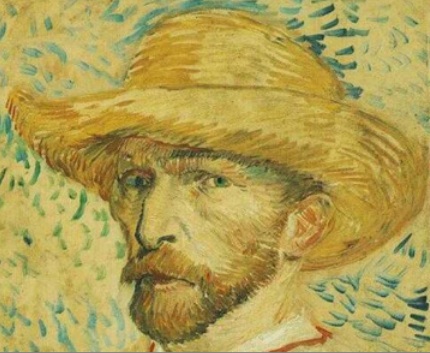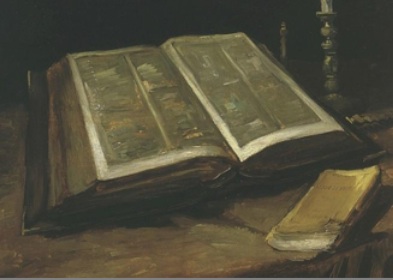 One of the more interesting artists in the history of the West is Vincent Van Gogh. One of the more fascinating dimensions of Van Gogh’s art was his expression of hope in bright yellow colors, and the absence of such colors in his famous Starry Night was a reflection of his soul’s melancholic state. So, David Hempton examines the faith story of Van Gogh in his new book, Evangelical Disenchantment: Nine Portraits of Faith and Doubt.
One of the more interesting artists in the history of the West is Vincent Van Gogh. One of the more fascinating dimensions of Van Gogh’s art was his expression of hope in bright yellow colors, and the absence of such colors in his famous Starry Night was a reflection of his soul’s melancholic state. So, David Hempton examines the faith story of Van Gogh in his new book, Evangelical Disenchantment: Nine Portraits of Faith and Doubt.
I apologize for the rest of this post disappearing … but I’ll try again.
Van Gogh grew up in a religious home with a religious (Dutch Calvinism) history. He made great strides in his faith as a young man as he internalized so much of it. With his depressive temperament, he leaned heavily in the direction of a more severe, hardships-shaped, and single-minded approach to his evangelical faith. In fact, he come to the view that only those who gave thmselves to the poor, as Jesus did, were living out genuine Christianity.
He moved to England as a young man and did some preaching, and his preaching emphasized life as a journey through hardships. “The water comes up to the lips,” he observed, “but higher it comes not.”
He returned to Holland, contemplated going through the seminary program at the university, didn’t seem to find a way to complete the entrance exams in languages, ended up at more of a Bible college type school, and became a missions pastor to a poor mining community … he didn’t do well … they moved him to another community … he didn’t do well … he eventually had to find other work and it was this experience, along with some broken loves, that cracked his evangelical faith.
Seeing the poor became his religion — God was with the poor and miserable and desolate and lonely and that’s where God can be seen.
 Here he begins to articulate a new faith, a faith in the aesthetic and faith that went way beyond the system of thinking: “there is something which I cannot define in a system though it is very much alive and very real, and [I] see that as God, or just as good as God.” And, “I think that everything which is really good and beautiful — of inner moral, spiritual and sublime beauty in men and their works — comes from God.” Love was for him the more excellent way; only love. In fact, he told his brother that those who fall in love over and over are more serious and holier than those who sacrifice their love and hearts to an idea.
Here he begins to articulate a new faith, a faith in the aesthetic and faith that went way beyond the system of thinking: “there is something which I cannot define in a system though it is very much alive and very real, and [I] see that as God, or just as good as God.” And, “I think that everything which is really good and beautiful — of inner moral, spiritual and sublime beauty in men and their works — comes from God.” Love was for him the more excellent way; only love. In fact, he told his brother that those who fall in love over and over are more serious and holier than those who sacrifice their love and hearts to an idea.
Van Gogh’s faith shifted from an evangelical faith to a faith in the expressive beauty. In the picture we have here we see Van Gogh’s faith shifting from a Bible to Emile Zola’s famous novel about the joy of life, which was little more than a capacity to live above the unsolvable riddles and ironies of life.
